
Background information
Here’s what you need to know about Samsung’s OLED TV comeback
by Luca Fontana

Last year, Samsung made a revolutionary OLED comeback – and smoothly outperformed LG, the OLED top dog. This year, the company’s revolutionary QD-OLED has reportedly become even better. So who’ll be crowned victor of the latest TV battle?
I’ve written so many articles about QD-OLED that even I sometimes forget that it’s not a long-established technology, but one that made its market debut only a year ago. And it wasn’t just any old launch. Despite a few teething problems, the Samsung S95B impressed me so much that I even dubbed it TV of the year 2022 in my end-of-year review.
The reason behind this was Samsung’s consistent efforts to develop OLED technology – something that had previously made LG a seasoned player in the TV market. Remember, QD-OLED is a display technology that combines the advantages of QLED and OLED. This means:
If you want to get right into the nitty-gritty of this, I’ve got just the thing for you:
Samsung’s keen to advance its new technology with the S95C. After all, it can’t possibly rest on its laurels. LG staged a wildly successful comeback with the G3 this year, despite using «outdated» OLED technology. In my review a few weeks back, I gave a euphoric explanation of how they managed it. But Samsung (and I’m willing to tell you this much this early on) has pulled off an impressive counter-strike.
Let the duel begin.
Full disclosure: the TV, a 65-inch version of the S95C, was provided to me by Samsung for testing.
With the S95C, Samsung has ditched mentions of «laser-slim» for a new signature design: Infinity One. The screen really is a bit thicker than before – I measure 0.9 centimetres. Further down on the panel, however, where hardware components such as the processor and motherboard are installed, there’s no difference in thickness. On the TV’s predecessor, this area measured a full three centimetres. As a result of this, it’s wonderfully easy to put the S95C up on a wall. You will, however, need to buy a 400×300mm VESA mount separately. You’ll be able to get one from us here.
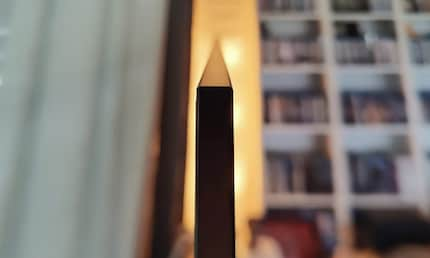
This aside, Samsung has stayed true to itself on the design front: modern, slim, narrow edges, no frills. The TV is held together by an elegant, aluminium frame at the front and a black plastic cover at the back. Then there’s the curved, wafer-thin stand. Although hardly noticeable, it measures a whopping 27 centimetres deep. Depending on the TV unit you have, getting a soundbar in front of the TV might be tight.
Compared with LG, Samsung leaves a bit more space between the lower edge of the panel and the TV cabinet: 6.5 centimetres. That should be enough for most soundbars. If the infrared sensor for the remote control is covered, switching the TV on and off becomes a bit of a pain.
The OneConnect box typical of Samsung’s top models has finally made a comeback. This is the small box that replaces the connectors usually built into the panel. There’s just a single, fairly inconspicuous cable connecting the OneConnect box to the TV. In addition to the transmitting video- and audio signals, it also supplies the screen with power. This gives you the opportunity to elegantly disappear not only the box, but all the cable clutter you’d normally have in a drawer in front of the telly. Conspicuously absent on the predecessor model, it’s made a comeback on the S95C. I’m happy.
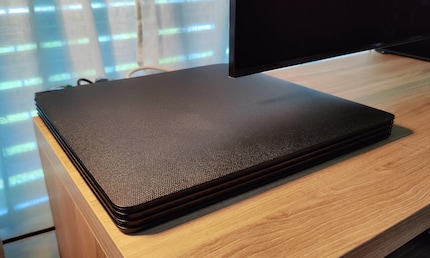
Let’s move on to the connections. These include:
All four HDMI inputs support HLG, HDR10 and HDR10+. Still no Dolby Vision, though. Unfortunately. This is also unlikely to change in the future. In an interview just this year, Nathan Sheffield, Samsung’s Head of TV and Audio Europe, told me, «I’m not sure what Dolby Vision would do for Samsung that we can’t already do anyway.»
The S95C can, however, handle Dolby Atmos, including passthrough, if you route the sound to an external sound system. DTS audio formats, on the other hand, are neither supported by the built-in speakers nor transmitted by the TV. Instead, they’re played back and transmitted as lower quality multichannel PCM 5.1 audio.
I’m about to take a deep dive into the subject matter. If you’re not into charts and diagrams, just skip it all and scroll straight to the section entitled «The picture: OLED-worthy reference material – even head-to-head with LG». From that point onwards, you’ll get my subjective impressions and quite a bit of video material.
I measured all the TV’s screen modes using professional tools from Portrait Displays. I moved through Standard, Movie and Filmmaker modes without calibrating or manually changing the settings. Basically, in the way most mere mortals would use a television. After all, you want to know if a TV’s precise and true to colour even without expensive, professional calibration. The only change I made was setting the maximum brightness to high in all picture modes.
The best values for all content types were achieved in HDR Filmmaker mode – except for gaming, in which case you should always select Game mode. With this in mind, all the measurements listed below refer to HDR Filmmaker mode.
Now for the brightness measurement. Here’s where the duel should get interesting. Unlike LG, Samsung relies on nanoparticles known as quantum dots for its OLED pixels. That’s where the «QD» in QD-OLED comes from. Simply put, they ensure that the millions of pixels in the display produce colour without having to deal with losses in brightness. I’ve already explained the physics behind this in a previous article.
Another advantage of quantum dots? They can produce an image of at least equal brightness, with even more intense colours, using less energy than LG’s conventional OLED technology. In theory, that is. Not only that, but the risk of burn-in is reduced.
So, let’s do a brightness test to see how the panel fares in practice. The chart shows a direct comparison between the S95C, Sony’s 2022 A95K (also equipped with a Samsung-made QD-OLED panel) and this year’s LG flagship, the G3.
Nit is the unit of measurement for candela per square metre (cd/m²), i.e. luminance or brightness. One hundred nits is roughly the brightness of a full moon in the night sky. Visuals: Luca Fontana / Flourish.
There are two axes: the vertical one represents brightness, while the horizontal one represents the section where the brightness was measured. At two per cent of the total screen, i.e. in selected, very small image sections, Samsung’s S95C reaches a total of 1,275 nits in Filmmaker mode. By OLED standards, that’s exceptional. Taking measurements with the TV in Dynamic mode (the brightest, but most poorly calibrated mode) I even get a reading of 1,330 nits.
Just a year ago, numbers like these would’ve knocked my socks off. But not anymore. Not now that LG’s G3, despite its «outdated» technology is an even brighter TV – at least in certain places, in small image sections. LG’s Vivid mode even took it up to more than 1,800 nits. Crazy! In terms of overall brightness, however, both TVs come in at around 230-250 nits.
What do these measurements tell us? Well, at certain points (think the moon shining in the night sky or a fiery explosion in an action movie) the LG G3 is considerably more vivid than the Samsung S95C. Another area in which the LG G3 has the edge is the contrast, i.e. the maximum difference between the brightest and darkest pixel. Looking at the overall brightness measurements, Samsung and LG are pretty much neck and neck. If you were to put both TVs next to each other, you probably wouldn’t notice that much of a difference in brightness.
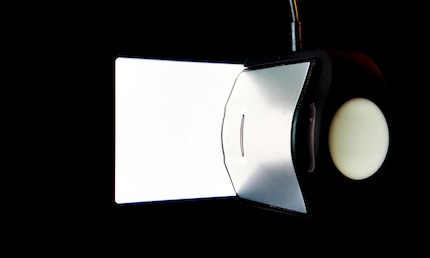
So why is LG’s TV still slightly brighter, even though we’ve just established that QD-OLED TVs are meant to be more vivid? Well now. That’s the million dollar question. LG has caught the whole industry off guard here. Its secret? Adding a new layer to the panel: a Micro Lens Array (MLA). In an MLA, convex microlenses ensure that the light generated is focused and amplified. LG actually says there are 5,000 lenses per pixel. Samsung’s S95C really is better than its predecessor, the S95B. Even so, LG’s additional microlenses have allowed it to triumph in the brightness battle. At least this year.
Let’s take a look at the white balance. You get white on a TV when the red, green and blue subpixels of each pixel radiate simultaneously and with equal intensity. In other words, full brightness generates the brightest white. The lowest brightness, on the other hand, creates the deepest black. If the subpixels can be switched off completely, as is the case with OLED or QD-OLED, this is referred to as true black. Therefore, everything in between is nothing more than shades of grey.
To measure the accuracy of the white balance, I need two tables:
The greyscale dE shows how much the greyscale generated by the TV deviates from the reference value. The RGB balance indicates in which direction the greyscale levels produced by the TV deviate from the reference value. Why’s this important? Let’s take the S95C as a specific example:
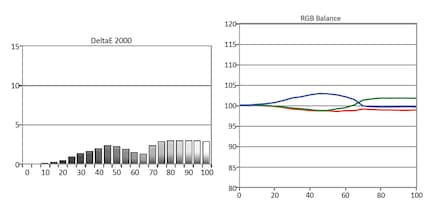
If you were to put the TV right next to a reference monitor, that would mean:
Any figure lower than five is very good for a non-calibrated TV. Plus, Samsung’s S95C has managed to do what no TV I’ve ever tested has managed before: keep the error deviation under five consistently, i.e. at any brightness. Not even the LG G3 was able to crack this. In my review it recorded a very good average dE figure of 3.19, but went over the important threshold of five in brighter image sections.
Samsung’s S95C, on the other hand, is virtually flawless in this respect. If I were being pernickety, I’d point out that the image has a slightly blue tint in darker areas, but a greenish hue in lighter areas. You can see as much in the RGB balance chart directly above. Even so, you’ll hardly notice it. The «error» rate always stays under five. It’s actually only 1.77 dE on average – an unbelievable figure. Viewed with the naked eye, most people would describe the white balance as pretty much perfect – and that’s right out of the box, with no calibration. That’s in Filmmaker mode, anyway.
Time to measure the colour gamut, that is, the coverage of the most common colour spaces. These are:
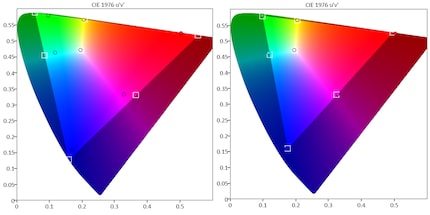
The large blob of colour, including the darkened areas, shows the full range of colours detectable by the human eye. The lightened area on the left shows the BT.2020 colour space. On the right, you’re seeing the same, only in the smaller DCI-P3 colour space. The white boxes show the actual boundaries of the respective colour spaces. The black circles, on the other hand, represent the limits actually identified during the measurement.
The measurement showed the following colour space coverage:
The S95C achieves an excellent 99.49 per cent coverage in the important DCI-P3 colour space. However, every OLED TV does well in this aspect – LG’s G3 reached 98.67 per cent.
Now for the BT.2020 colour space. Samsung’s S95C covers this very well, reaching 90.89 per cent – and that’s not a given. Even LG’s G3 with its WOLED technology comes in at «only» 74.12%. This demonstrates the future-proof nature of QD-OLED technology. Although the movie and TV industries almost exclusively calibrate their HDR content in the much more widely used DCI-P3 colour space, the BT.2020 colour space tends to be considered the colour space of the future. At the moment, QD-OLED seems to be the only technology geared up for this.
Time for a closer look at the colour error. What it does is describe how accurately colours are represented. As above, I’ll be referring to the deviation between the TV and the reference value as dE. The white boxes indicate the reference colours sent to the TV by the test pattern generator. The black circles, on the other hand, represent the colours actually measured. Ideally, the circles should be inside the boxes. The further outside they are, the greater the deviation from the reference value, i.e. the dE value. Again, dE values below 5 are good for non-calibrated TVs.
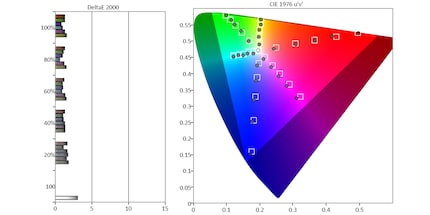
These measurements are magnificent – and not surprising. Not after gauging the TV’s nigh on perfectly calibrated white balance. After all, the more accurate the white balance, the more accurate the colours coming out of it are. So let’s take a look at the figures. Samsung’s S95C has an average dE of just 1.33 in Filmmaker mode. That’s a clear improvement on its predecessor, the S95B, which I [tested] last year(/page/qd-oled-samsungs-fernseher-der-zukunft-ist-fantastisch-24425). And it’s even better than the LG G3’s 1.97 dE, which blew me away when I reviewed it recently.
You can’t measure reflections on your screen as such. But some of you requested that I take a look at it in my reviews. Not a bad idea. For test purposes, I recreate a typical living room scenario. I take a photo of the screen late one evening after work without closing the curtains, blinds or shutters. There’s an oven behind me and a standard lamp next to the TV. The light from the standard lamp is reflected in the glass door of the oven behind me and thrown back onto the TV.
Here’s the result:

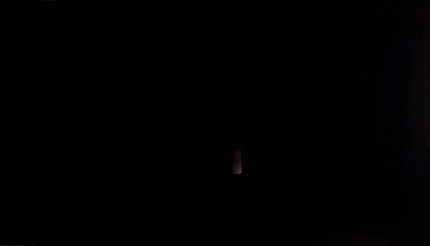
Both the Samsung S95C and the LG G3 have made serious progress in handling reflectiveness. Compared to their respective predecessors – the S95B and the G2 – the lamp is much less visible on both. As far as the one-on-one duel is concerned, however, I’d say LG is slightly further ahead. With their significantly improved overall brightness, these two TVs are the first OLED models I’ve tested that have also shone in bright rooms.
I’m thrilled with the new QD-OLED generation. Not only has it improved in overall brightness, but it also produces an incredibly reference-worthy image. And that’s right out of the box, without calibration. As long as you’ve got it in Filmmaker mode, that is. The other modes are significantly less well calibrated. So from a theoretical point of view, Samsung has managed to come up with a TV that sets the bar pretty damn high. Let’s see how it fares in practice.
So the picture’s bright and the colour fidelity’s excellent – even right out of the box, with no calibration. At least in theory. But how are things in practice?
Whenever I test a TV for its colour rendering, I go for Guardians of the Galaxy, Vol. 2. In particular, the scene when Ego’s golden palace is bathed in the fierce red glow of sunset. And amidst it all, Drax’s greenish skin covered in blood-red tattoos. It’s hard to see any significant differences compared to the LG G3. Little wonder, since both TVs are characterised by excellent colour fidelity. As is the QD-OLED competition from Sony.
That’s why I took a scene from Avatar: The Way of Water (from 00:45, featuring a predominance of blues and greens, to draw a comparison. In this instance, Samsung’s colour rendering actually looks warmer than LG’s. It does, however, look less dynamic – i.e. less intense than its competition.
Source 1: Disney+, Guardians of the Galaxy Vol. 2. Timestamp: 00:56:47.
Source 2: Disney+, Avatar: The Way of Water. Timestamp: 00:48:23.
Let’s circle back a bit. The colours on screen don’t always have to pop. Take James Bond – Skyfall for example. James and young quartermaster Q are at an art museum, looking at a painting of a proud old battleship being unceremoniously towed to the scrapyard. The scene is obviously an allusion to the ageing secret agent. Here, too, the differences are scarcely noticeable. Unless you pay attention to the actors’ skin. In the case of Samsung, it looks unnaturally orange to me. I prefer the LG G3 in this respect. After all, James Bond isn’t a Marvel comic spectacle, it’s a grim spy thriller set in the real world.
Source: Apple TV+, James Bond – Skyfall. Timestamp: 00:39:02.
How does Samsung’s latest QD-OLED perform in dark scenes? For this test, the opening scene from Blade Runner 2049 comes into play. Both the Samsung and the LG are wonderfully dark. If you film against the light, it’s typical for everything else to turn into black silhouettes. So this isn’t a case of black crush, which refers to details being swallowed up in dark areas. The LG has a greenish tint, which is intensified by the high dynamics in the colour rendering. Samsung’s picture, on the other hand, looks warmer and more natural.
Source: UHD Blu-ray, Blade Runner 2049. Timestamp: 00:04:50.
Using TCL’s Mini LED TV for comparison (from 0:50 onwards really shows what I mean when I say Samsung’s OLED picture is «wonderfully dark». TCL’s is far too bright and brings out details where there should be none. This is due to the bright LCD picture caused by the underlying technology. If you’re in a bright room in the daytime, it’s a blessing compared to most OLED TVs. However, it’s a curse in a dark room watching dark scenes. In addition, there’s a strong blooming effect – that kind of halo you get around bright objects against a dark background. Take a closer look at the windows, for example.
For my final image test, I’ll be looking at brightness gradations. It’s interesting that the Samsung again looks slightly more measured and less dynamic in this scene, but all the more natural for it. The Samsung’s reddish-blue tint is present in all of the videos above, while LG’s is slightly green. As for the sun in the background, no TV in the video has a distinct advantage over the others. It’s very visible as a ball in the sky.
Source: UHD Blu-ray, Jurassic World. Timestamp: 00:21:18.
The processor is the TV’s brain. Its main task is to receive, process and then display image signals. In this context, processing means recognising poor image quality and enhancing it. Here’s how Samsung puts it: «Brilliant 4K AI Upscaling technology completed by 20 neural networks ensures you feel the power of 4K. Perceptional colour mapping and OLED brightness booster provide unrivaled brightness, colour, contrast and detail.»
Well, duh.
What they’re actually saying through all this elaborate marketing speak is that the processor’s built to remove noise, enhance colours, smoothen edges, make movements more fluid and add any missing pixel information.
For this test, I want to make the processor sweat. Concretely, by taking a look at judder – something all TVs are affected by, especially during long camera pans. Sam Mendes’ 1917 is full of these steady, slow-flowing camera movements, so the slightest judder is immediately noticeable. Perfect for the judder test. In my comparison with models from other manufacturers, I pay particular attention to the vertical beams in the barn, checking whether they run smoothly through the image or judder.
Source: UHD Blu-ray, 1917. Timestamp: 00:42:25.
If Samsung’s wondrous TV puts in a shaky performance anywhere in this review, it’s here. In the literal sense. It’s so shaky a performance, in fact, that I’m pretty sure it’s not down to the TV. After all, the second comparison shown in the video reveals that its direct predecessor copes much better with judder. Could it be a problem with the UHD Blu-ray? Cleaning the disc doesn’t improve things. As always, I shoot the video with the same camera, with the same settings. Meaning, either Samsung has developed the processor backwards or the problem lies elsewhere.
Sure, the beam scene will push any TV processor to pain limits. That’s what it’s there for. On this occasion, however, the judder is simply too striking for me to put the blame squarely on the manufacturer. Something seems to have gone wrong during my review. If anyone has an inkling what that could be, go ahead and let me know in the comments section.
In the meantime, I decide to try another scene from 1917. After all, the predecessor might actually turn out to be that bad. It’s a good choice of scene – here, too, Mendes’s camerawork provides an immense challenge for most processors. Hard edges in front of a blurred background – like the helmets of the two soldiers below – are particularly tricky. That’s where both the processor and the pixels have to react incredibly fast.
Source: UHD Blu-ray, 1917. Timestamp: 00:35:36.
Ah, now we’re getting somewhere. You can barely see any judder, even in comparison with LG’s or Sony’s processor. Sony is the only one that comes off slightly worse here. This, however, was a conscious decision – in Sony’s eyes, movies have to be a bit jerky. Like they were at the cinema before the digital age. Nice and old-fashioned.
Next up, the Apple original For All Mankind. I want to see how long a single pixel takes to change colour. You can tell if the pixels aren’t changing colour fast enough when the image looks smeared – an effect known as «ghosting». When the camera pans over the surface of the moon, pay attention to the superimposed text.
Source: Apple TV+, For All Mankind, Season 1, Episode 5. Timestamp: 00:00:10.
None of the TVs reveal any significant weaknesses. At most, LG shows the tiniest amount of ghosting at the beginning. But it’s hardly noticeable. All in all, a solid performance from Samsung and LG. No surprise there. OLED TVs’ underlying technology gives them excellent response times. That’s why they’re also considered to make great gaming monitors. LCD TVs are at a disadvantage in this respect. You can see that at the end of the video when comparing it with TCL’s Mini LED. In the spirit of fairness, I do want to emphasise that this comparison is with the C82 model, which is more than two years older than Samsung’s S95C. The example is only meant as an illustration. TCL’s successor model, the C92, released last year, is a clear step up in this regard.
Now for one of the most difficult tests: upscaling. I want to see how well the processor upscales lower quality material, such as Blu-ray or live television. Or, even better, The Walking Dead. The series was deliberately shot on 16 mm film to preserve the old-fashioned grain that creates the feeling of a broken, post-apocalyptic world.
Source: Netflix, The Walking Dead, Season 7, Episode 1. Timestamp: 00:02:30.
Samsung’s picture looks fantastic. Hardly any image noise. Sharp edges. And natural colours. This is what good upscaling looks like. That up there is an SDR-quality HD image with about 2 million pixels – blown up to 8.3 million pixels. If I compare it to last year’s Sony processor, for example, there are clear compression artefacts on the right of Sony’s picture at 00:18. Samsung’s picture is also significantly less noisy. Probably because Sony has done a lot more image-sharpening. This makes stubble and facial wrinkles look more detailed. However, it also makes artefacts and noise in the picture stand out more clearly.
Again, Samsung hopes to position its QD-OLED TV as one of the best gaming TVs on the market this year. The two South Korean manufacturers, Samsung and LG, are locked in an eternal battle for the affection of gamers. One of the manifestations of this is the new Samsung OLED monitor, which my colleague Samuel Buchmann just reviewed. It’s also evident when you look at the LG OLED Flex, which was released at the beginning of the year. It’s a TV that curves at the push of a button – and it drove poor Samuel to the brink of madness. The culprit? ABL.
The problem with ABL is that it can interfere with gaming. Playing FIFA 23 while testing the LG G3, for instance, the software sometimes thought it was registering a static image. This is because the average brightness barely changed over the course of a match. To protect the panel, it then reduced the brightness – to the point that I could barely keep track of the ball. A sign of a seriously aggressive ABL. It’s probably because LG’s new META technology makes the image shine so much brighter that ABL needs to intervene more aggressively to prevent overheating and burn-in.
Nothing like this happened on the Samsung S95C. Perhaps because Samsung’s QD-OLED isn’t as bright as the LG G3. Or maybe I just had more confidence in Samsung’s QD-OLED panels than in LG’s WOLED panels.
So, what else? When measuring the colour accuracy in Game mode, I get a less-than-groundbreaking average delta E of 9.86 (read the section on colour error further up if you’re interested in more detail). In fact, the image often seemed a bit gaudy to me. With a delta E of 4.44, the LG G3’s colour rendering was much more natural.
Now to test the input lag. Using a measuring device from Leo Bodnar, I recorded an average input lag of 9.7 milliseconds for a UHD picture with 60 frames per second. That’s very good. In addition, the TV supports all features relevant for gamers:
Samsung, like LG, Sony, Philips, TLC and Panasonic, has entered into a partnership with many large gaming studios – the HGiG, or HDR Gaming Interest Group. According to the manufacturer, this ensures that HDR is displayed as the game developers intended. Let’s take Spider-Man: Miles Morales on PS5 as an example.
Source: PS5, Spider-Man: Miles Morales, 120 Hz mode, VRR and ray tracing enabled.
In this comparison, the LG G3 quickly makes it clear which of the two TVs conjures up more accurate colours. Even so, I notice that black really is black, the edges look sharp and the picture stays clear even during fast and jerky camera pans. Look out for Miles’s dark silhouette against the light, the detailed textures of snow-covered New York and the detail in the clouds. I like Samsung’s Game mode, even if there are game modes with better colour fidelity.
Nice! Like last year, Samsung has provided a dedicated submenu where you can fine-tune settings for gaming and see the current frame rate. Crucially, the Samsung S95C supports the PS5’s VRR-120Hz mode without issue.
Samsung uses the operating system Tizen. Since it was overhauled in 2021, it’s been slightly reminiscent of a Google TV. In other words, pressing the Home button opens a whole window full of tiles. From there, you can access your TV apps and a variety of HDMI inputs.
Source: Samsung Tizen
There’s really not much else to say. As with Google TV, there are still annoying movie and TV recommendations that I never need – LG thankfully nipped these in the bud this year. Even so, the menu navigation feels fluid and responsive thanks to the TV’s good processor.
And there’s an extra treat. In Ambient mode, which you can briefly see in this video at 00:37, the TV switches to an art mode. Once there, I can choose to transform the display into either a clock, a painting or a moving image. This is meant to liven up the rectangular black hole that a TV otherwise is when off, at low power and low brightness.
My colleague Flori Saratz, Category Business Manager for TV and Audio, recently asked me a question: «Which TV would you rather buy? The Samsung S95C or the LG G3?» To be honest, making a clear decision was easier last year. Back then, I would’ve definitely said, «Samsung». This year, on the other hand, Samsung and LG are battling it out on an unprecedentedly high level with their flagship TVs. They’ve now moved into a realm where personal preferences play a more important role than numbers and measurements.
According to the figures, the Samsung S95C with its QD-OLED technology has yet again delivered the most reference-worthy picture of any TV I’ve tested. And the measurements pass the eye test to boot. Nevertheless, I like the LG G3’s picture slightly more. Why? Probably because of its slightly better brightness, which gives the picture a little more «kick» than Samsung’s S95C. Especially during the day. Not only that, but Samsung doesn’t have Dolby Vision or any DTS audio support. While I can live with the former, I’m less than enthused about the latter. What’s more, the Tizen operating system feels a bit more sluggish than webOS. In terms of price, the South Korean companies are on a level playing field. Both TVs are crazy expensive – over 3,500 Swiss francs at the time of writing (22 August 2023).
All this considered, I’d probably go for the LG G3. But it’s a close race. Very close. But who knows? If the QD-OLED and META technologies become affordable in the next two to three years, I really will buy a new TV – for the first time in seven years.
Header image: Luca Fontana
I write about technology as if it were cinema, and about films as if they were real life. Between bits and blockbusters, I’m after stories that move people, not just generate clicks. And yes – sometimes I listen to film scores louder than I probably should.